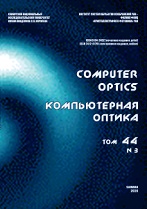|
OPTO-IT
Modeling of quantum-like cognitive phenomena by the Fourier-holography technique under the choice of alternatives
A. V. Pavlov
ITMO University, St. Petersburg, Russia
Abstract:
The article is dedicated to the search for a biologically motivated mechanism of the cognitive phenomenon of violation of the classical formula of total probability for the disjunction of incompatible events, which is considered by a number of researchers as a quantum-like phenomenon. A classical mechanism implemented by the 6f Fourier holography scheme of the resonant architecture that does not require reference to quantum mechanics either in its physical nature or at the level of formalism is demonstrated. In the analysis, the decision-making is interpreted as a choice of alternatives by using the non-cooperative game "Prisoner's Dilemma". The approach to the task is based on the search for a mechanism for forming a conditional estimate under a condition that contradicts the rule of monotonous decision logic. It is demonstrated that this estimate, in contrast to the unconditional and conditional one with a non-contradictory condition, is formed by logic with exception. The ring architecture of the holographic setup corresponds to the biologically inspired neural network concept of the excitation ring and implements cognitive dissonance on logic with exception. Conditions and ranges of violation of the classical formula of total probability in relation to the correlation radius of the reference image recorded in a hologram storing the monotone logic inference rule are analytically determined. The analytical model is confirmed by a quantitative coincidence of the results of numerical modeling with the published results of natural experiments.
Keywords:
Fourier holography, decision making, choice of alternatives, quadratic measure, estimate, quantum probability, non-cooperative games, logic with exclusion, cognitive dissonance, dynamical system, correlation length, order parameter.
Received: 09.11.2020
Accepted: 03.03.2021
Citation:
A. V. Pavlov, “Modeling of quantum-like cognitive phenomena by the Fourier-holography technique under the choice of alternatives”, Computer Optics, 45:4 (2021), 551–561
Linking options:
https://www.mathnet.ru/eng/co940 https://www.mathnet.ru/eng/co/v45/i4/p551
|

| Statistics & downloads: |
| Abstract page: | 160 | | Full-text PDF : | 49 | | References: | 17 |
|




 Contact us:
Contact us: Terms of Use
Terms of Use
 Registration to the website
Registration to the website Logotypes
Logotypes








 Citation in format
Citation in format 